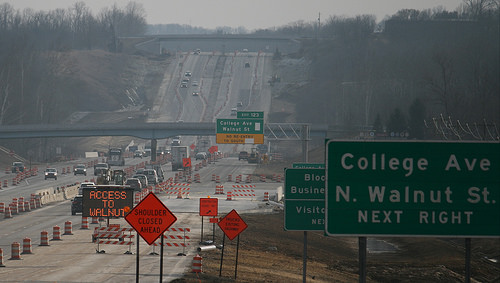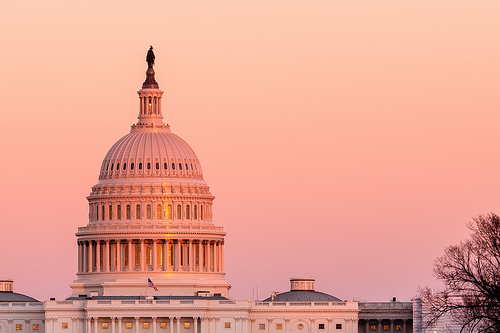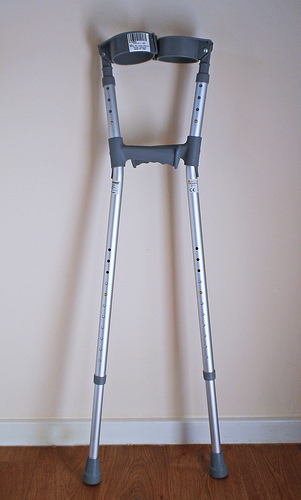The Environmental Protection Agency (EPA) has completed a long review, and reaffirmed the primary National Ambient Air Quality Standard (NAAQS) for oxides of sulfur (SOX; usually measured as sulfur dioxide (SO2)). This is the first review of the primary SOX NAAQs since 2010 (primary standard – EPA did not review the secondary SOX NAAQS established in 2012).
Read MoreAudit, Compliance and Risk Blog
Jon Elliott
Recent Posts
Tags: Environmental risks, Environmental, EPA, Greenhouse Gas, ghg, SOX, CAA
EPA Massively Updates National Chemical TSCA Inventory Database
Posted by Jon Elliott on Tue, Mar 26, 2019
The Environmental Protection Agency (EPA) has just made massive updates to the largest national data base of chemical information, the TSCA Inventory. Since 1976, the Toxic Substances Control Act (TSCA) has provided EPA with broad authorities to collect information about chemical substances in commerce in the U.S., including new chemicals that manufacturers and importers hope to bring into commerce. Information about all these substances is collected in the TSCA Inventory.
Read MoreTags: Environmental risks, Environmental, EPA, Hazcom, tsca
On March 11, the Trump Administration issued its budget proposal for federal Fiscal Year (FY) 2020 (October 1, 2019 through September 30, 2020), entitled “A Budget for a Better America: Promises Kept. Taxpayers First.” The proposal includes a 31% cut in the Environmental Protection Agency (EPA) budget, from $8.28 billion in FY 2019 (under a Continuing Budget Resolutions rather than a fully-new federal budget), to $6.07 billion for FY 2020, with corresponding personnel cuts from 14,376 full-time-equivalent employees (FTE) to 12,415. (these are numbers for EPA in the government-wide budget from the Office of Management and Budget (OMBB) summary of the entire budget proposal, and EPA provides additional details on its own website).
Read MoreTags: Business & Legal, Environmental risks, Environmental, EPA
After a long rulemaking, the US Environmental Protection Agency (EPA) has just promulgated rules defining certain waste pharmaceuticals as “hazardous wastes” under the Resource Conservation and Recovery Act (RCRA), and establishing standards for their management by selected healthcare and “reverse distribution” waste management facilities. These regulations replace general RCRA generator and treatment requirements otherwise applicable to hazardous wastes.
Read MoreTags: Health & Safety, EPA, Hazcom, RCRA, pharmaceuticals
Another Round of EPA and Corps of Engineers Proposals to Redefine “Waters of the United States”
Posted by Jon Elliott on Tue, Feb 26, 2019
On December 11, 2018 the Environmental Protection Agency (EPA) and the U.S. Army Corps of Engineers (Corps) jointly proposed to revise their regulatory definitions of “waters of the United States”, applying authority under the Clean Water Act (CWA). CWA does not define this term clearly, so after decades of rulemakings and litigation, it remains in dispute. Generally, Democratic presidents and the judges they appoint tend to support geographically and semantically broad applications, while with Republican presidents and the judges they appoint tend to take narrower views. The latest proposal would narrow the definition, reversing Obama-era rules adopted in June 2015, and presently in effect in 22 states based on the present status of ongoing judicial appeals (I summarized the 2015 rules, and the litigation leading up to them here and the Trump-era EPA’s 2017 proposal to roll back the 2015 revisions here). The agencies characterize this narrowing as an increase in certainty for stakeholders, accomplished by eliminating some of the site-specific discretion that the 2015 rules provided to permit writers. Because of the government shutdown, this latest proposal was not published in the Federal Register until February 14, 2019.
Read MoreTags: Environmental risks, Environmental, EPA, effluent, clean water
If You Want Everyone To Know You’re A Transparent and Sustainable Company, Delaware Can Help
Posted by Jon Elliott on Tue, Feb 19, 2019
When companies claim they’re reducing their environmental impacts, how does anyone distinguish actual improvements from greenwashing? A growing number of national and international nonprofits and industry trade associations offer benchmarks and standards that companies can subscribe to, and third parties offer their services to evaluate and validate claims. Effective October 1, 2018 the state of Delaware has added a governmental layer, which Delaware companies can use to submit information and claims under penalty of perjury in order to gain formal state acknowledgement. The state claims this is the first such law.
Read MoreTags: Business & Legal, Environmental, sustainability, corporate social responsibility, directors, directors & officers
Even if the latest polar vortex has ended by the time you read this, employers in most parts of the continent should be worrying about protecting workers against winter weather. Occupational safety and health regulators include “environmental” hazards as those that may require employers to provide their employees with personal protective equipment (PPE), and employers also bear a “general duty” to protect workers against recognized hazards. These requirements cover potential harm from extreme temperatures including cold, as well as slippery surfaces and other hazards from frozen and melting snow or other precipitation.
Read MoreTags: Employer Best Practices, Health & Safety, OSHA, Employee Rights, climate change
Is Your Workplace Injury and Illness Log Ready for Compliance with OSHA Requirements?
Posted by Jon Elliott on Thu, Jan 31, 2019
The Occupational Safety and Health Administration (OSHA) requires employers to prepare and maintain records of occupational injuries and illnesses (I&I Logs) as they occur. OSHA also requires employers to post an annual I&I Summary in each “establishment” within their workplace by February 1, summarizing that workplace’s I&Is during the previous calendar year. In states that administer federal standards within state-run programs, employers follow the comparable state requirements. Establishments with 250 or more workers must file electronic summaries by March 2.
Read MoreTags: Business & Legal, Health & Safety, OSHA, Workplace violence
California Requires Pharmaceutical and Sharps Waste Stewardship
Posted by Jon Elliott on Tue, Jan 29, 2019
Beginning January 1, 2019, a new California law establishes extensive requirements for proper management of waste pharmaceuticals and “sharps.” These new provisions complement – but aren’t actually well-connected to -- medical waste management requirements (I outlined typical state-based requirements here), and workplace provisions to protect workers from “bloodborne pathogens” that may be present because of health and medical procedures and the wastes they generate (I discussed OSHA’s “BBP” Standard here). The rest of this note summarizes these new requirements, adopted by Senate Bill (SB) 212 (Jackson).
Read MoreTags: Health & Safety, California Legislation, Environmental risks, Environmental, Hazcom, pharmaceuticals
Directors' Liability for Workplace Sexual Harassment in Canada Can Depend on Which Laws are Applied
Posted by Jon Elliott on Tue, Jan 22, 2019
Tags: Business & Legal, Employer Best Practices, Employee Rights, Workplace violence, Canadian, directors, directors & officers










